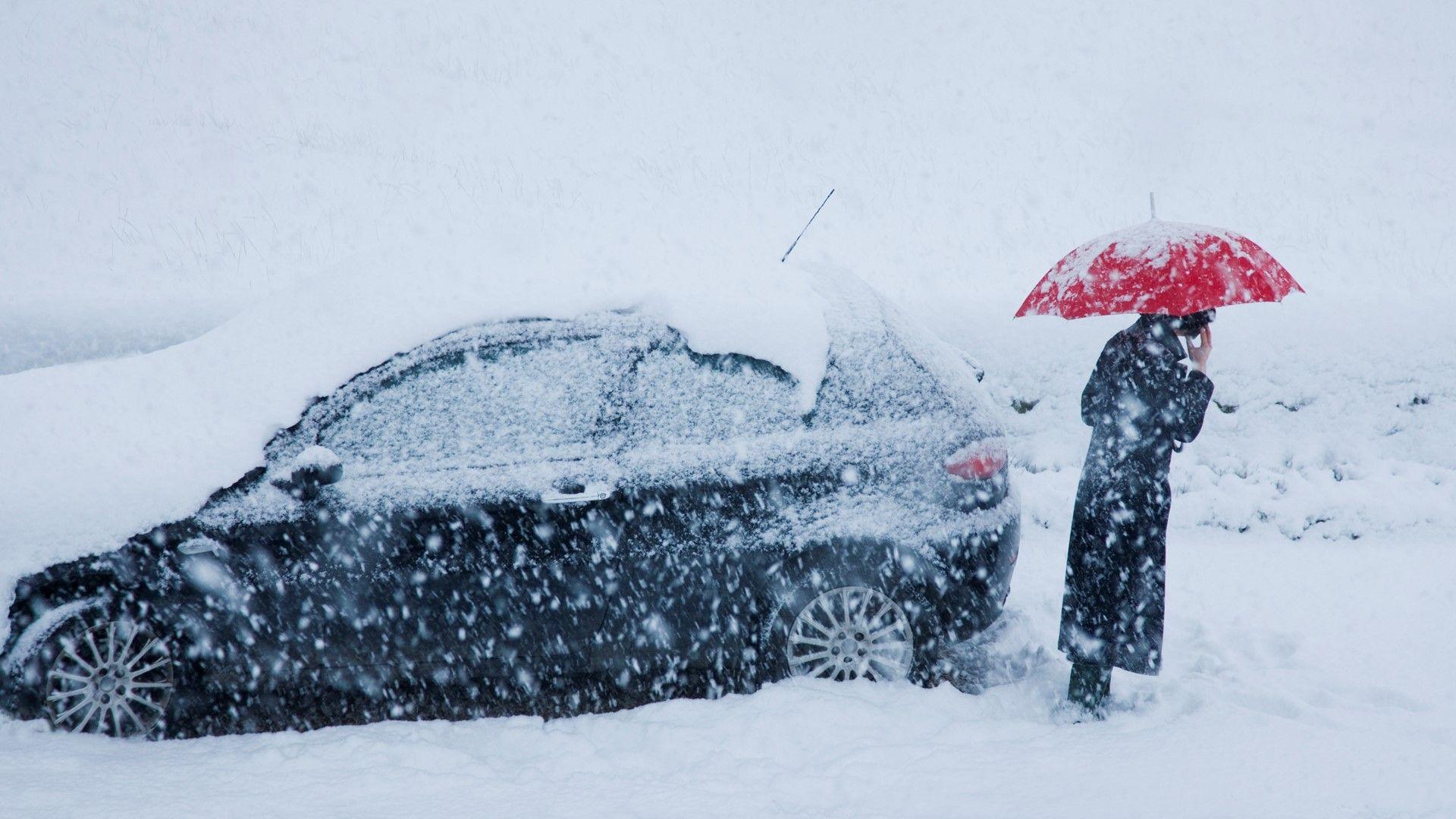Weather warnings: What you need to know

- Published
When dangerous weather is forecast, a weather warning will be issued.
The warnings are provided by the Met Office, the UK’s national weather service - and are designed to help us plan ahead and stay safe from the hazardous impacts of severe weather.
Eight different types of weather are covered: rain, snow, wind, thunderstorms, lightning, fog, ice, and extreme heat.
Extreme heat warnings are the newest type. They were introduced in 2021, as a response to our changing climate and the effects that heat can have on our health and infrastructure.
Warnings can be sent out up to seven days in advance or, in rapidly worsening conditions, they come into effect immediately.
An example of a Met Office warning matrix. Here, the position of the tick indicates that a yellow weather warning would be issued
How do I read a weather warning?
Weather warnings are given a colour – yellow, amber or red - depending on the impact the weather is likely to have and the likelihood of it happening.
Yellow and amber warnings can represent a range of impact levels and likelihoods so it is important to read each warning carefully.
The Met Office, which set up the National Severe Weather Warning Service in 1988 following the Great Storm of 1987, uses a matrix system to help decide on the severity of the warnings, which then helps decide the colour.
A tick is placed in whichever box best matches the impact of the weather against the likelihood of it happening.
In the example above a yellow warning would be issued. However, even if expected impacts remained the same, if confidence in the likelihood of those impacts increases, then the warning would move up a level to the next "impact" box and the warning would become an amber one.
However, you do not have to be able to interpret a matrix system to be able to read and understand a weather warning.
When a warning is sent out, the Met Office also sends a map showing; the affected area shaded in the colour of the warning, the time period the warning covers and a description of the weather and potential impacts.
The 91Čȱ¬ will often show a version of this map on television and social media.
Warning areas during Storm Ashley in October 2024 - a higher impact amber warning for wind covers a smaller area than the lower impact yellow warning
What do the different colours mean?
Yellow warnings are the lowest level of warning and are the ones you will see most often. They give you a heads up that some severe weather is possible and to start planning for impacts to either travel, power or property.
They can be issued where disruption is expected to be limited to a small amount of people in a given area, or when a larger area is expected to be affected, but confidence in the disruption happening is still low. This is often the case when warnings are sent several days in advance.
When either confidence in the forecast of severe weather or the level of disruption expected increases, an amber warning is sent out, at which point it is time to start putting your plans into action as travel disruption is more likely and there is a potential risk to life and property.
Red weather warnings are the most serious type of warning and you will only see them when the Met Office believes that dangerous, potentially life-threatening weather is expected imminently.
Thankfully such warnings are rare, but when they are issued you should take action immediately to keep yourself and others safe.
When we see these in the 91Čȱ¬ Weather Centre we know it is imperative to get the message out as quickly and widely as possible.
Even a relatively small amount of snow can have a major impact on travel
Can I travel when a weather warning is issued for my area?
Firstly, pay attention to what the weather warning is for and assess whether it's likely to affect your plans for the day.
For instance, a warning for fog might be irrelevant to you if you have no plans to travel during the warning period but, if you live near a river, a rain warning could cause concern due to potential flooding.
Note the colour of the warning and its validity time as this will guide you on whether you need to alter your plans.
Read the warning carefully as Met Office warnings include details of potential impacts and what actions are recommended.
If you wish to travel, heed the advice given in the warning text and also look out for any advisories issued by local authorities or emergency services. On most occasions you may only need to prepare for delays to your journey, but any warning that advises you against unnecessary travel should be treated seriously.
- Published27 October 2021
- Published9 January
Where can I find the latest weather warnings?
Up-to-date weather warnings for the UK can be found on the 91Čȱ¬ Weather website. You can see also see if warnings have been issued for your area on the 91Čȱ¬ Weather app.
On our online warning pages you can also access the latest flood warnings. These are issued by the relevant authority in each of the nations and relate to ongoing or expected river or coastal flooding, rather than being linked to specific severe weather.
Met Office warnings are not to be confused with the weather health alerts system run jointly by the UK Health Security Agency (UKHSA) and the Met Office, which have been issuing hot and cold heat-health alerts in England since June 2023.